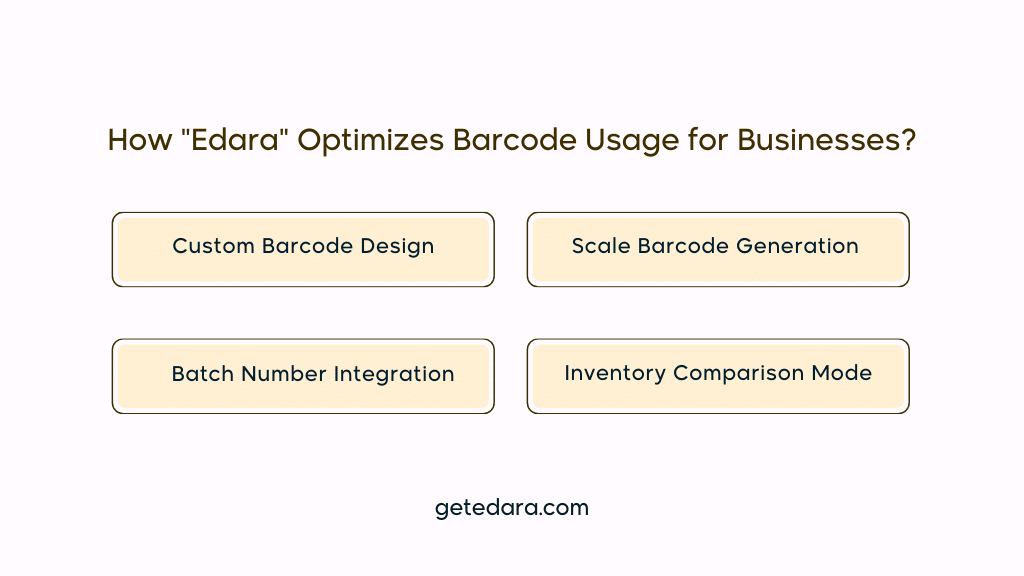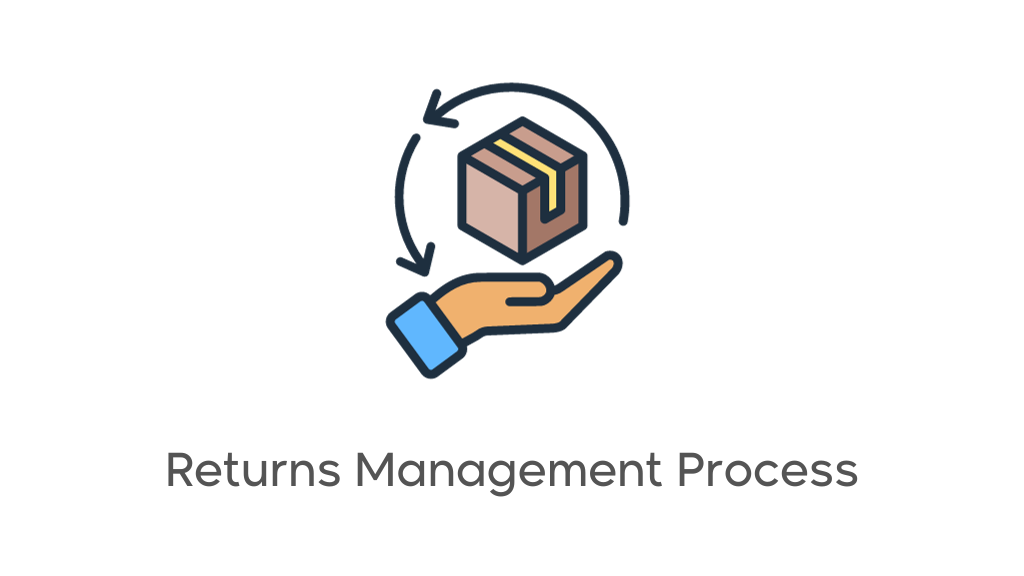How Barcode Improves Business Efficiency?
5 Reading minutes
At first glance, a barcode might seem like nothing more than a simple arrangement of lines and numbers. However, beneath this seemingly basic design lies a powerful tool for precise tracking and data-driven decision-making ultimately leading to enhanced efficiency in various industries.
But what do these lines actually represent? And how does barcode technology optimize business operations? Let’s dive deeper to uncover the answers.
What is a Barcode?
Barcodes are machine-readable data patterns that encode product information through bars and spaces. They revolutionize business operations by enabling instant data capture, enhancing inventory control, and minimizing errors.
When scanned, barcodes convert physical information to digital data, dramatically improving product tracking and management efficiency across industries.
Types of Barcodes
To fully understand barcodes, it’s essential to explore their different types. Barcodes are categorized based on their structure and use cases. The most common categories include:
1D Barcodes (Linear Barcodes)
These barcodes consist of parallel lines and spaces of varying widths, mainly used for identifying products and managing inventory. Some of the most commonly used types include:
UPC Code
A 12-digit Universal Product Code (UPC) is widely used in retail stores for product identification and checkout scanning.
EAN Code
The European Article Number (EAN) comes in two formats—EAN-8 and EAN-13—and is essential for global inventory management and product tracking.
Code 39
Also known as USS Code 39, this barcode can encode both numbers and letters, making it popular in industrial and inventory applications.
Code 128
A highly versatile barcode that supports alphanumeric characters and special symbols, making it ideal for logistics, shipping, and warehouse management.
2D Barcodes
Unlike traditional linear barcodes, 2D barcodes store data in both horizontal and vertical dimensions, allowing them to contain more information in a compact space. These barcodes can be scanned from any angle, making them highly efficient. Examples include:
QR Codes
Quick Response (QR) codes can store text, URLs, contact details, and more. They are widely used in marketing, ticketing, and digital transactions.
Data Matrix Codes
These compact barcodes are commonly found on small electronic components and industrial items, ensuring precise tracking of tiny products.
PDF417 Codes
A stacked barcode format that can encode large amounts of data, often used on ID cards, driver’s licenses, and shipping labels.
3D Barcodes
For industries requiring even more data storage, 3D barcodes offer a solution. They are particularly useful for retail and healthcare applications. One key example is:
GS1 DataBar Codes
Previously known as RSS Codes, these barcodes provide a compact way to store critical product information. They are commonly used in industries such as:
- Pharmaceuticals, for tracking medication batches.
- Fresh Produce, to manage perishable goods efficiently.
- Bakery Items, ensuring proper labeling and inventory control.
How the Barcodes Drive Business Efficiency and Growth?
There are many advantages that you can get when working with barcodes within the organization, most notably:
1- Facilitating sales processes
Barcodes revolutionize retail transactions by eliminating manual data entry. At checkout, rather than tediously typing product information for each item, cashiers simply scan barcodes to instantly retrieve product details and pricing.
This streamlined process accelerates transactions, reduces human error, and shortens customer wait times.
The efficiency boost allows stores to serve more customers while maintaining accuracy. Beyond speeding up checkout, barcode systems automatically capture comprehensive sales data, providing retailers with precise information for inventory management and business intelligence.
This data becomes invaluable for analyzing consumer purchasing patterns and making informed business decisions based on actual transaction records rather than estimates or incomplete information.
2- Improved Inventory Management and Accuracy
Barcode technology transforms inventory management by replacing error-prone manual counting with instant digital scanning.
This innovation enables real-time tracking across all locations, dramatically accelerates stocktaking processes, and maintains perpetually accurate inventory records.
By implementing barcodes, businesses minimize costly overstocking and stockout scenarios while saving valuable time previously spent on manual inventory verification.
3- Increased Operational Efficiency and Productivity
Time is money in any business. Barcodes help optimize workflow by automating data entry and product tracking.
This leads to faster checkout processes in retail, resulting in a smoother customer experience. In warehouse operations, employees can locate and move products quickly, improving overall efficiency.
Additionally, barcode systems reduce paperwork, as scanning replaces manual record-keeping, allowing employees to focus on more strategic tasks instead of spending time on repetitive data entry.
4- Cost Savings and Better Decision-Making
Barcode implementation delivers exceptional ROI by accelerating operations and reducing staffing needs. The technology virtually eliminates costly shipping errors and inventory discrepancies through precise digital tracking.
Beyond operational improvements, barcodes generate valuable product movement analytics that inform strategic purchasing and inventory decisions.
This combination of reduced labor costs, minimized errors, and data-driven insights creates a powerful efficiency advantage for businesses adopting barcode systems.
How “Edara” Enhances Barcode Utilization for Business Efficiency?

“Edara” provides many features that facilitate the use of barcodes and enhance their effectiveness within your organization, most notably:
Customizing Barcode Sizes and Specifications
“Edara” provides customizable barcode solutions that adapt to specific business needs. Organizations can modify dimensions, displayed information, and packaging compatibility.
Strategic choices, like omitting prices from barcodes, eliminate frequent replacements during price changes, saving time and money.
Embedding Batch Numbers in Barcode Data
“Edara” enhances product integrity by embedding batch numbers into barcode data, creating comprehensive traceability throughout product lifecycles.
This sophisticated tracking enables efficient recalls, streamlined quality control, and detailed sales analysis while simultaneously improving customer confidence and regulatory compliance.
Generating Scale Barcodes for Weight-Based Products
“Edara” seamlessly integrates scale systems with barcode technology, automatically generating weight-based codes for variable-weight products.
This precision ensures accurate pricing at checkout, builds customer trust, streamlines transactions, and virtually eliminates weight-related pricing errors for food retailers.
Enhancing Inventory Accuracy with Comparison Mode
Edara’s innovative Comparison Mode elevates inventory accuracy by automatically verifying received goods against transfer orders. This powerful feature extends to merchandise issuance, instantly detecting discrepancies that require attention.
By implementing this proactive verification system, businesses dramatically reduce human errors while maintaining precise inventory records and optimizing operational workflows.
Generating Barcode-Based Sales Reports
“Edara” transforms barcode data into comprehensive sales analytics, delivering insights on transactions, product performance, and market trends.
This intelligence enables businesses to optimize inventory levels, refine pricing strategies, and enhance profitability through data-driven decision making.
Conclusion
Understanding the importance of barcodes goes beyond recognizing different types—it’s about leveraging them to improve business operations. Barcodes enhance sales efficiency, streamline inventory management, and improve customer relationship management.
To fully capitalize on barcode technology, businesses need a robust ERP system tailored to their needs. “Edara” provides the ideal solution, integrating barcode functionality with inventory control, sales tracking, and financial management to drive business growth.
Contact us today to learn more about how “Edara” can transform your business operations.
Related articles
Understanding Omnichannel Commerce: A Comprehensive Guide
Imagine a shopping experience where customers feel like they’re interacting with a single, perfectly synchronized brand, no matter where they engage. This is the power of omnichannel commerce. By seamlessly…
Refining Customer Satisfaction via Return Management Process
In the vast landscape of retail, the return management process stands as a significant challenge, with far-reaching implications for businesses. According to the National Retail Federation (NRF), the value of…
Optimizing Purchasing Management and How “Edara” Helps?
While your growing company delivers excellence, purchasing management challenges are emerging as demand rises. Timely resource acquisition at competitive prices is becoming critical to maintain operations. The key to success…


